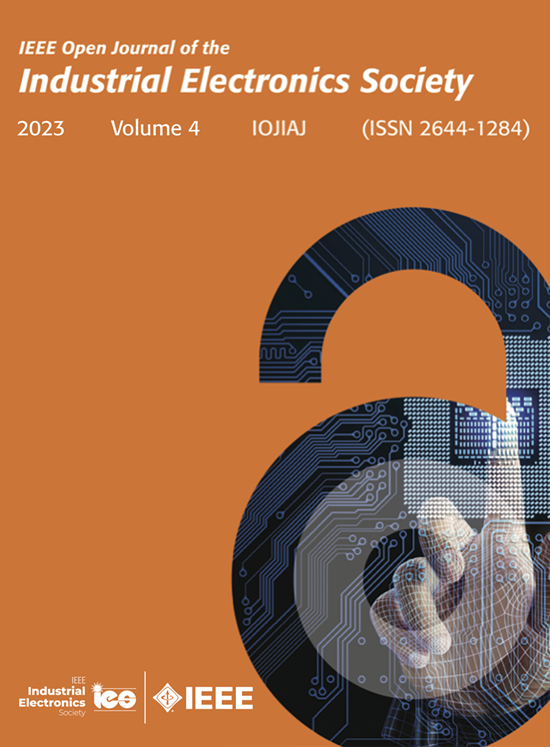FPGA-Efficient Digital Implementation of a Multiplierless Cochlea–Neuron Interaction Model for Industrial-Scale Neural Systems
IF 4.3
Q1 ENGINEERING, ELECTRICAL & ELECTRONIC
IEEE Open Journal of the Industrial Electronics Society
Pub Date : 2025-07-28
DOI:10.1109/OJIES.2025.3592720
引用次数: 0
Abstract
This article presents a novel digital design methodology for modeling cochlea–neuron interactions, tailored for applications within the scope of industrial electronics, such as real-time biosensing, smart health interfaces, and resource-aware neural signal processing. The proposed model employs a simplified 2-D cochlear structure based on the Hopf oscillator, optimized using linear shift-adder (ADD)-based functions and look-up table-based sampling to eliminate complex multipliers and achieve hardware-friendly, high-speed performance. This hybrid multiplierless architecture aligns with the journal’s focus on efficient digital realization of intelligent systems and field-programmable gate array (FPGA)-based electronic designs. The resulting cochlea–neuron interaction circuit, when implemented on a Xilinx Virtex-II FPGA, demonstrates 1.33× speed-up and supports up to 87 parallel cochlear modules, while maintaining high signal fidelity and neural activation accuracy. Simulation and hardware validation confirm that the proposed system provides a scalable, low-resource solution suitable for emerging industrial biosensing systems, smart auditory devices, and embedded neural interfaces. The methodology contributes to advancing the real-time digital implementation of biologically inspired systems in industrial and biomedical electronics.工业规模神经系统中无乘法器耳蜗-神经元交互模型的fpga高效数字实现
本文提出了一种新的模拟耳蜗-神经元相互作用的数字设计方法,为工业电子领域的应用量身定制,如实时生物传感、智能健康接口和资源感知神经信号处理。该模型采用基于Hopf振荡器的简化二维耳蜗结构,利用基于线性移位加法器(ADD)的函数和基于查找表的采样进行优化,以消除复杂的乘法器,实现硬件友好的高速性能。这种无乘法器混合架构与该杂志对智能系统和基于现场可编程门阵列(FPGA)的电子设计的高效数字实现的关注一致。当在Xilinx Virtex-II FPGA上实现时,所得到的耳蜗-神经元交互电路具有1.33倍的加速,支持多达87个并行耳蜗模块,同时保持高信号保真度和神经激活精度。仿真和硬件验证证实,所提出的系统提供了一种可扩展的低资源解决方案,适用于新兴的工业生物传感系统、智能听觉设备和嵌入式神经接口。该方法有助于推进工业和生物医学电子学中生物启发系统的实时数字实施。
本文章由计算机程序翻译,如有差异,请以英文原文为准。
求助全文
约1分钟内获得全文
求助全文
来源期刊

IEEE Open Journal of the Industrial Electronics Society
ENGINEERING, ELECTRICAL & ELECTRONIC-
CiteScore
10.80
自引率
2.40%
发文量
33
审稿时长
12 weeks
期刊介绍:
The IEEE Open Journal of the Industrial Electronics Society is dedicated to advancing information-intensive, knowledge-based automation, and digitalization, aiming to enhance various industrial and infrastructural ecosystems including energy, mobility, health, and home/building infrastructure. Encompassing a range of techniques leveraging data and information acquisition, analysis, manipulation, and distribution, the journal strives to achieve greater flexibility, efficiency, effectiveness, reliability, and security within digitalized and networked environments.
Our scope provides a platform for discourse and dissemination of the latest developments in numerous research and innovation areas. These include electrical components and systems, smart grids, industrial cyber-physical systems, motion control, robotics and mechatronics, sensors and actuators, factory and building communication and automation, industrial digitalization, flexible and reconfigurable manufacturing, assistant systems, industrial applications of artificial intelligence and data science, as well as the implementation of machine learning, artificial neural networks, and fuzzy logic. Additionally, we explore human factors in digitalized and networked ecosystems. Join us in exploring and shaping the future of industrial electronics and digitalization.
 求助内容:
求助内容: 应助结果提醒方式:
应助结果提醒方式:


